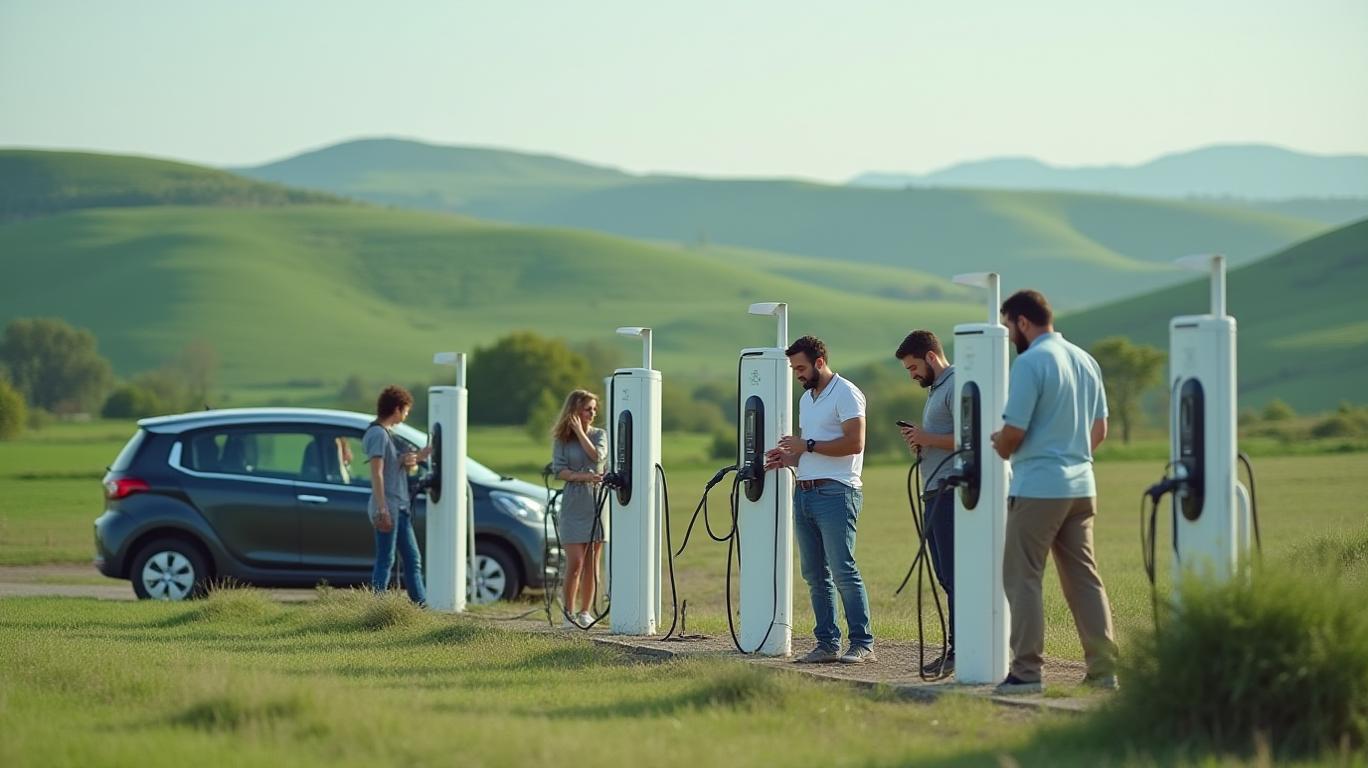Charging Ahead: How Vermont’s EV Policy Pause Points to Infrastructure Goldmines
Vermont’s recent pause on enforcing its electric vehicle (EV) sales mandates has sent shockwaves through the clean energy sector, exposing systemic bottlenecks in EV adoption and redirecting investor attention to overlooked opportunities. While environmental groups decry the move as a setback, the reality is far more nuanced: Vermont’s policy reversal underscores a critical truth—that infrastructure, affordability, and technological readiness must lead the charge in the EV transition, not regulatory quotas. For investors, this shift presents a clear roadmap to capitalize on solutions-oriented sectors while sidestepping automakers overly reliant on sales targets.
The Systemic Challenges Unveiled by Vermont’s Pause
Vermont’s decision to halt enforcement of its Zero Emission Vehicle (ZEV) mandate—a cornerstone of its climate policy—reveals the fragility of top-down regulatory frameworks. The state cited three core issues:
1. Infrastructure Gaps: Only 12% of Vermont’s new vehicle sales are EVs (vs. a 35% target by 2026), with rural charging networks inadequate for long-haul trucking (e.g., milk haulers to Massachusetts lack en-route charging).
2. Technological Limits: Heavy-duty EVs (e.g., Class 8 trucks) remain prohibitively expensive and underpowered for Vermont’s agriculture and logging industries.
3. Affordability Barriers: Small businesses face sticker shock—electric trucks cost $50,000–$100,000 more than diesel equivalents, with no clear ROI in Vermont’s low-mileage rural routes.
The pause also highlights a broader truth: 60% of states in the ZEV coalition (including Maryland, Delaware, and Oregon) have delayed or weakened mandates, signaling a paradigm shift toward solutions over quotas.

Infrastructure Developers: The New “Green” Gold Rush
The Vermont policy reversal points to a massive investment opportunity in charging infrastructure—a sector poised to explode as regulators prioritize practicality over idealism.
Charging Network Operators: Companies like ChargePoint (CHPT) and EVgo are critical to bridging Vermont’s rural “charging deserts.” Their stock performance (see below) reflects investor confidence in this space, though growth hinges on public-private partnerships.
Utility Grid Modernization: Utilities with smart grid investments—such as NextEra Energy (NEE) and Duke Energy (DUK)—will benefit as states like Vermont pivot to incentivize EV adoption. Vermont’s EValuateVT dashboard already identifies grid strain as a barrier, creating demand for distributed energy solutions.
State Partnerships: States like Texas (which offers $2,500 EV rebates) and California (with its $500 million charging grant program) are outpacing Vermont in pragmatic policy. Investors should track states adopting incentive-based frameworks over mandates, as these regions will attract EV adoption and infrastructure investment.
The Risks for Automakers Reliant on Mandates
While infrastructure plays thrive, automakers betting solely on regulatory quotas face headwinds. Vermont’s pause—and similar moves by Delaware and Maryland—signal a dwindling tolerance for mandates that ignore market realities.
Tesla (TSLA) and GM (GM), which have relied on ZEV credits to offset declining internal combustion engine sales, face a structural threat as states abandon quotas. Their stock prices (see below) already reflect this uncertainty.
Truck Manufacturers: Companies like Nikola (NKLA) and Rivian (RIVN), which have hyped heavy-duty EVs for sectors like agriculture, now confront Vermont’s stark truth: buyers aren’t lining up.
The Strategic Investment Playbook
- Prioritize Infrastructure Over Automakers: Allocate capital to charging networks and utilities with grid resilience plans.
- Watch for State Policy Shifts: States transitioning to incentives (e.g., rebates, tax breaks) will be EV adoption leaders—invest early.
- Avoid Automakers with “Mandate-Driven” Revenue: Their valuations may crater if quotas unravel.
Conclusion: The Transition is Real—but the Path is Practical
Vermont’s pause isn’t a retreat from climate goals; it’s a recalibration. The EV revolution will succeed only if it aligns with infrastructure readiness, affordability, and rural realities. For investors, this means backing solutions—not just slogans—and steering clear of automakers clinging to outdated mandates. The next decade’s winners will be those who build the roads, grids, and incentives that make EV adoption seamless, not forced.
The clock is ticking. Investors who move now to fund infrastructure and grid modernization will capture the next wave of green growth—while those clinging to quotas may find themselves stranded in a policy wasteland.
This analysis is for informational purposes only and does not constitute financial advice.

Comments
No comments yet